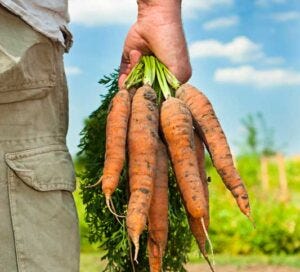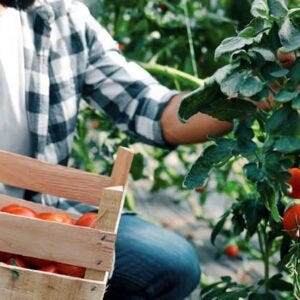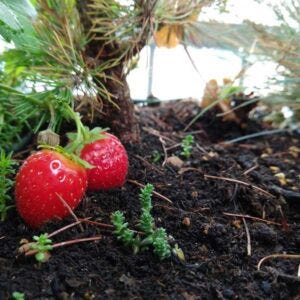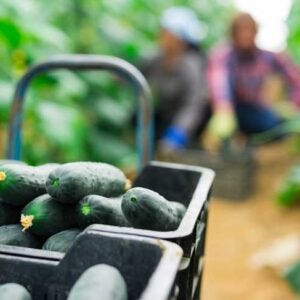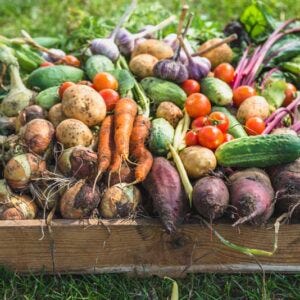The pandemic has brought to light critical problems with food insecurity and hunger in the United States and around the world. It’s unconscionable that a country like the United States, with too much food, has allowed anyone to go hungry – handouts are necessary right now, but we as a society must look at how we can end hunger once and for all.
We have enough food – it’s not getting to the people who need it.
This is the first in the Plant Eat Share series, a look at building healthy communities and sharing solutions that can help end food insecurity. Through this, we’ll also discover how these efforts help mitigate climate change, lessen our public health crisis, and improve quality of life. Our first piece to the solution is gleaning.
Gleaning
Gleaning has been around for centuries – it’s simply the act of harvesting leftover food from fields. In the past, the less fortunate were given the opportunity to come into fields and take food they needed; today, volunteers tend to gather the food and donate to a group that then distributes it to those in need.
Benefits of Gleaning
Gleaning has many benefits; for example, it:
Provides nutritious food to those who don’t have access because of cost or availability
Helps reduce food waste
Less produce in the field means less methane emissions, which helps curb greenhouse gases that contribute to climate change
Provides resources to nonprofit agencies so they might better serve those in need
Builds good relations between community members, local gardeners, and farmers
Types of Gleaning
There are various types of gleaning, including:
Farm gleaning – According to a study from Santa Clara University, over 30% of food is left in a field after harvesting
Garden gleaning – With the owner’s permission, volunteers harvest extra produce from a home’s garden
Urban gleaning – This is the process of collecting leftover fruits and vegetables in cities and urban areas. Food Forward is a large food rescue organization that has volunteers in the Los Angeles area. Individuals glean fruit and vegetables that will not be sold or eaten from homeowners’ yards, farmers markets and a wholesale market. The group averages 500,000 pounds a week of gleaned food that goes directly to over 1,800 hunger relief organizations around the Los Angeles area
Public gleaning – Fallen Fruit has developed maps in several cities, showing where food (mainly fruit) hangs over or is found on public land (sidewalks or public parks, for example). Area residents are encouraged to help themselves to what they want/need as food on public land is free to take.
A different group called Falling Fruit has created a global map that, according to them, “is a massive, collaborative map of the urban harvest. By uniting the efforts of foragers, freegans, and foresters everywhere, the map already points to over a half million food sources around the world (from plants and fungi to water wells and dumpsters).” The food is free and can be publicly found.
How to Glean
If you’re interested in gleaning, you might first want to check to see if there’s a group already working in your area – there are gleaning networks already set up around the country. If you prefer to strike out on your own, here are some tips to start:
Find a place where you can obtain food, such as a farmers market, community garden, local farm, or home gardeners – or grow your own food to share!
Determine which groups in your area are in need of the food you’ll be collecting, such as churches with food programs, senior centers, food pantries, local community organizations and associations. If you’re really motivated, set up your own distribution system and give out food yourself to neighbors in need. Community fridges are also a great place to take the food you gather
Recruit volunteers to help
Acquire sturdy containers for the food
Go out and glean!
The USDA has a gleaning toolkit called “Let’s Glean!” so you can start a food rescue program in your area.
Become a Gleaning Resource
If you have a garden – or are thinking of planting a garden! – factor in gleaning opportunities, whether by you or a local group. Plant an extra row or two of tomatoes, spinach – anything you’d like. Either harvest any leftovers and take to a local food pantry, or connect with a gleaning group to have them come in and take your excess food.
AmpleHarvest.org is an interactive map of the U.S. that connects gardeners with food pantries in their area.
Gleaning Networks
If you’d like to join a gleaning group already in existence, you can become part of The Gleaning Network of the Society of St. Andrew. Its 23,000 plus volunteers from states all across the U.S. collected and distributed over 13 million pounds of fresh produce in 2019.
Or you can search the National Gleaning Project’s database to find a gleaning program in your area.
Planting an extra patch of food for your neighbors in need or volunteering to help recover food for others are great ways to be part of the solution. You are the answer to what we need. Now go grow something!
Thank you for reading the Whole Health Journal, a space dedicated to spirituality, wellness and healthy food. A peek into my latest book coming soon. Free and paid. By Diane Hatz. If you like what you read, please subscribe.
This article also appeared on the Whole Healthy Group blog.

